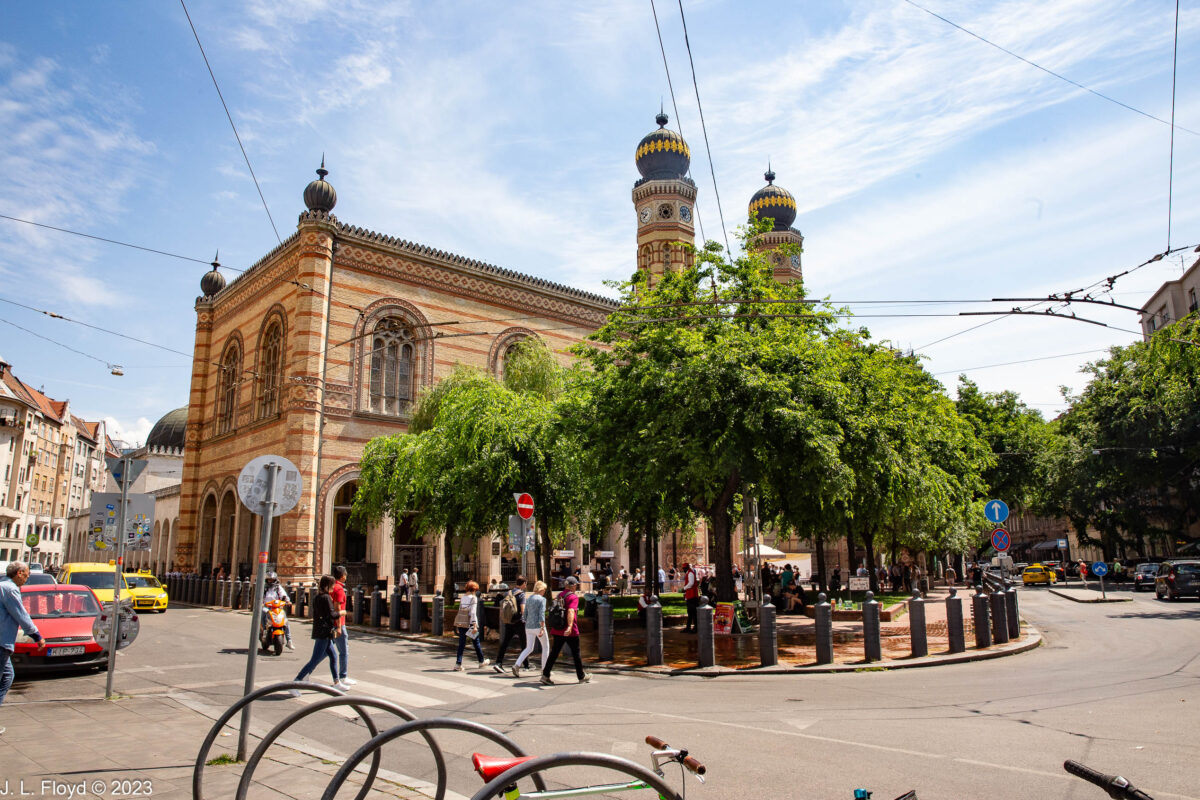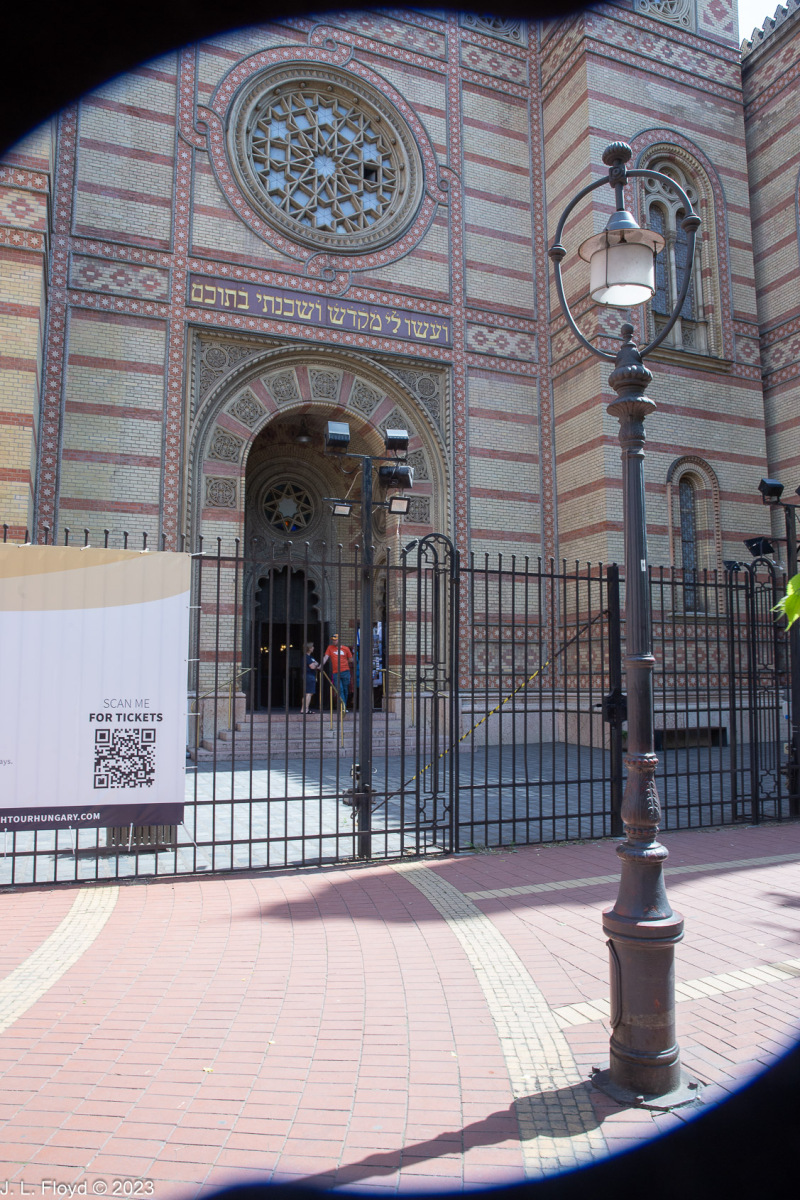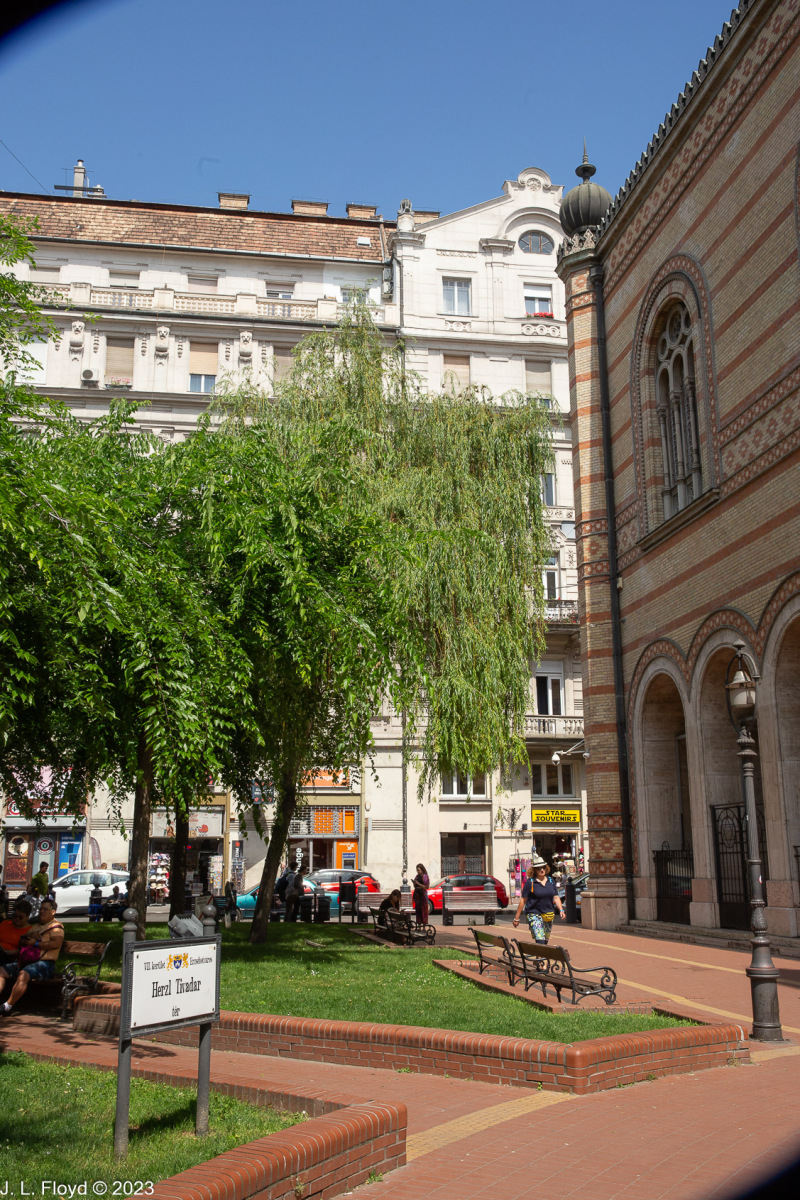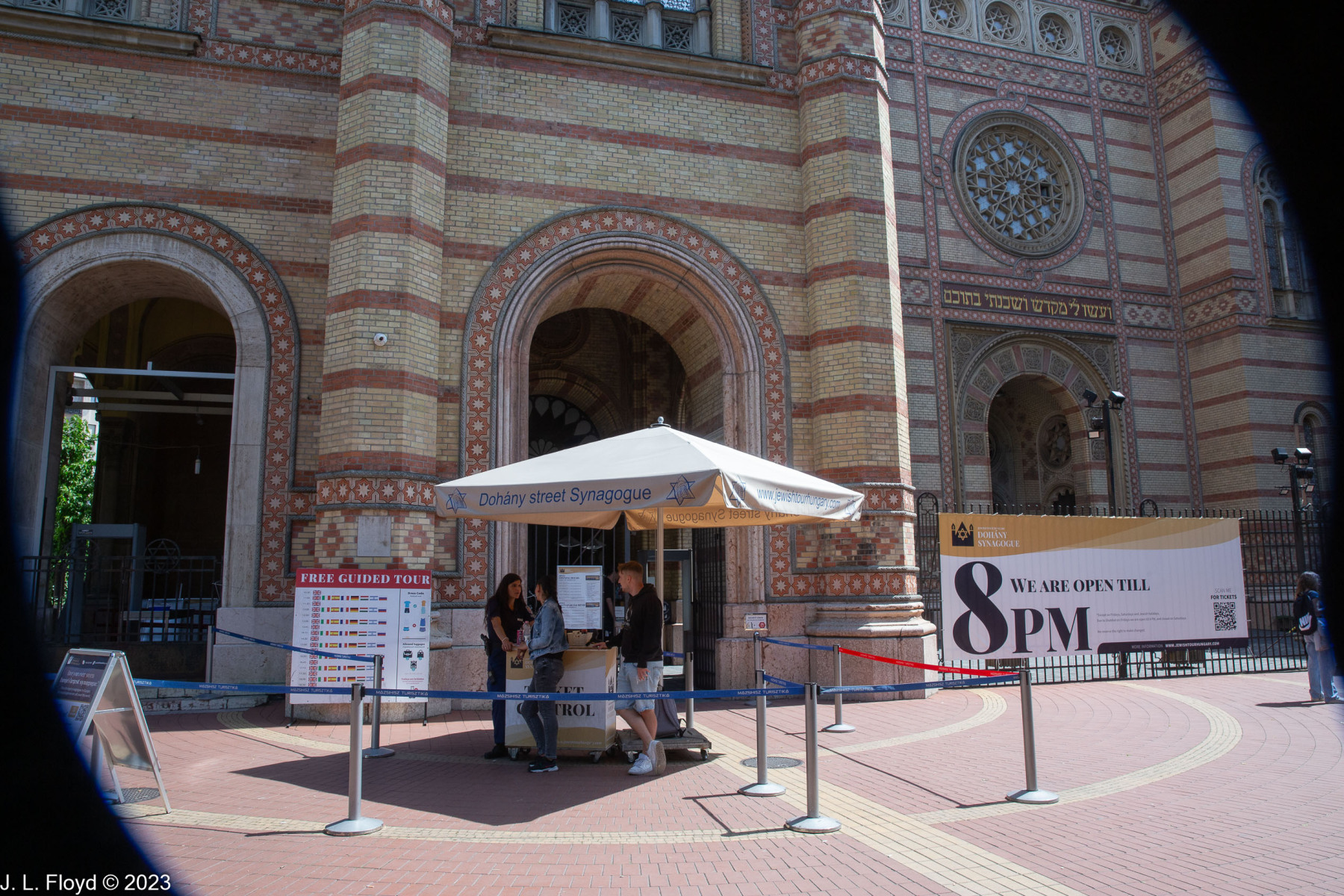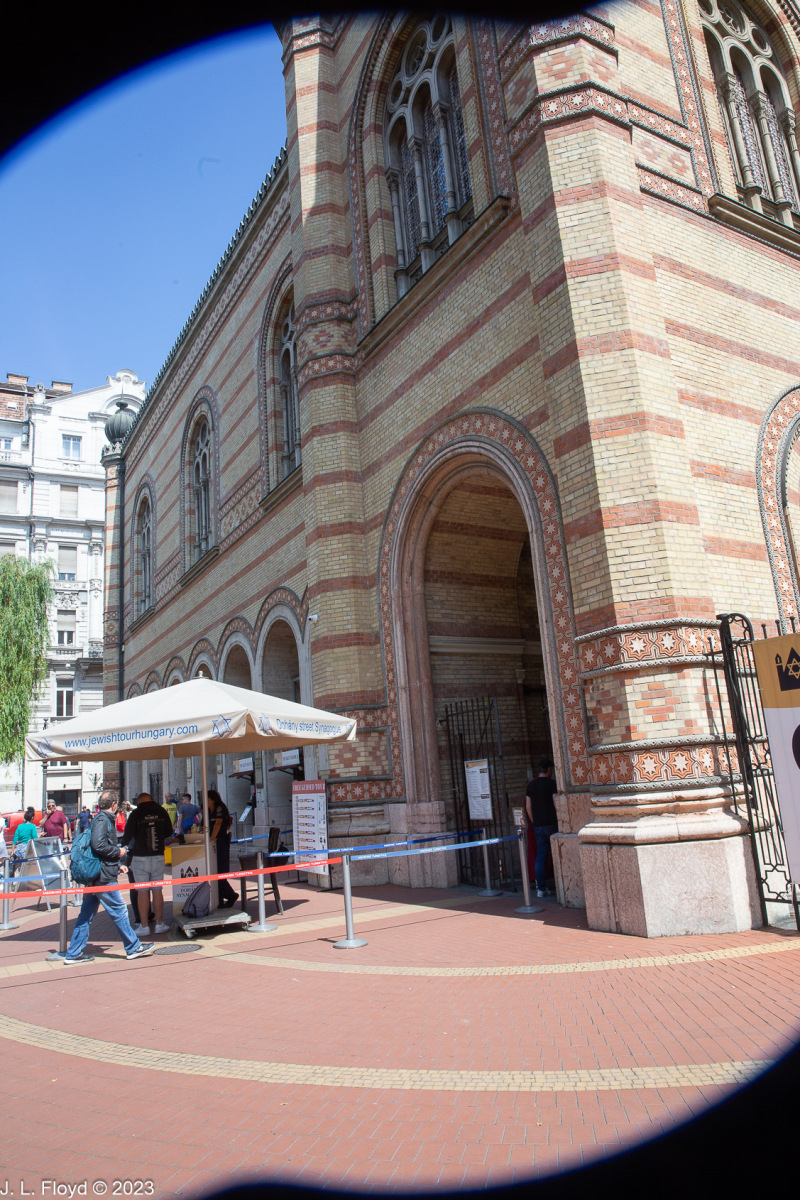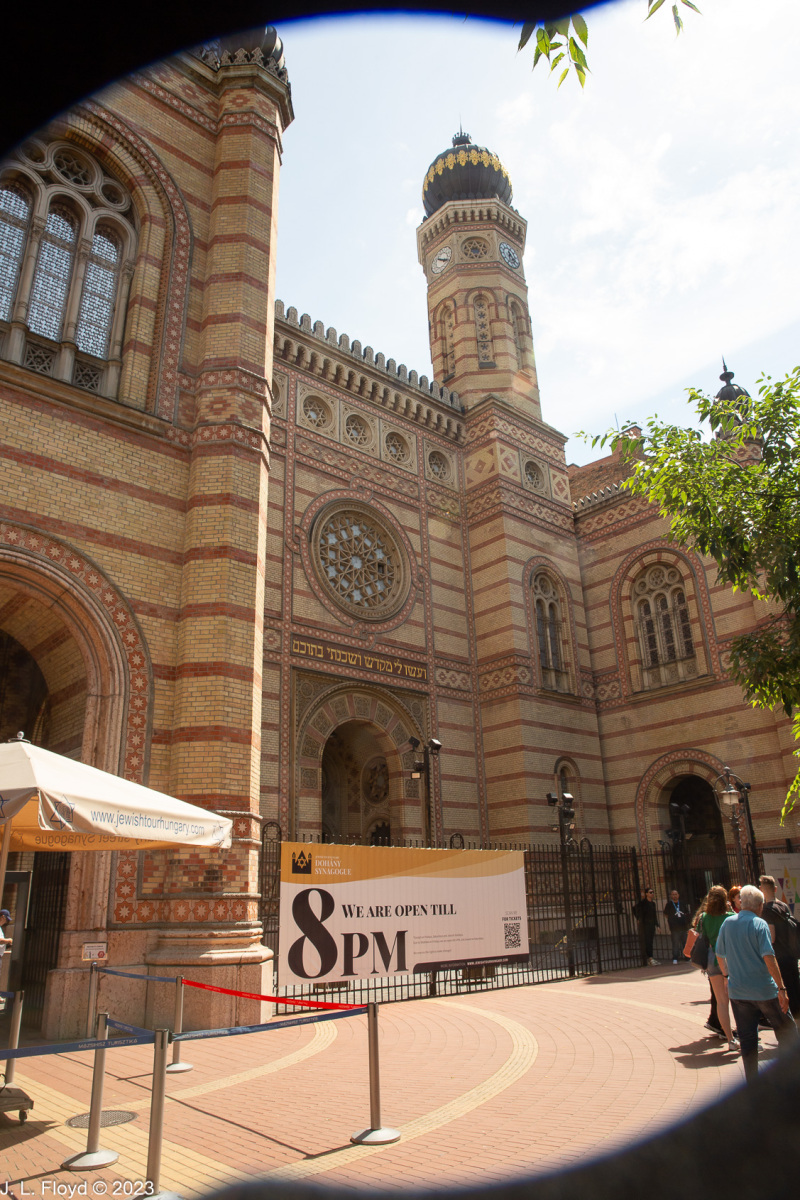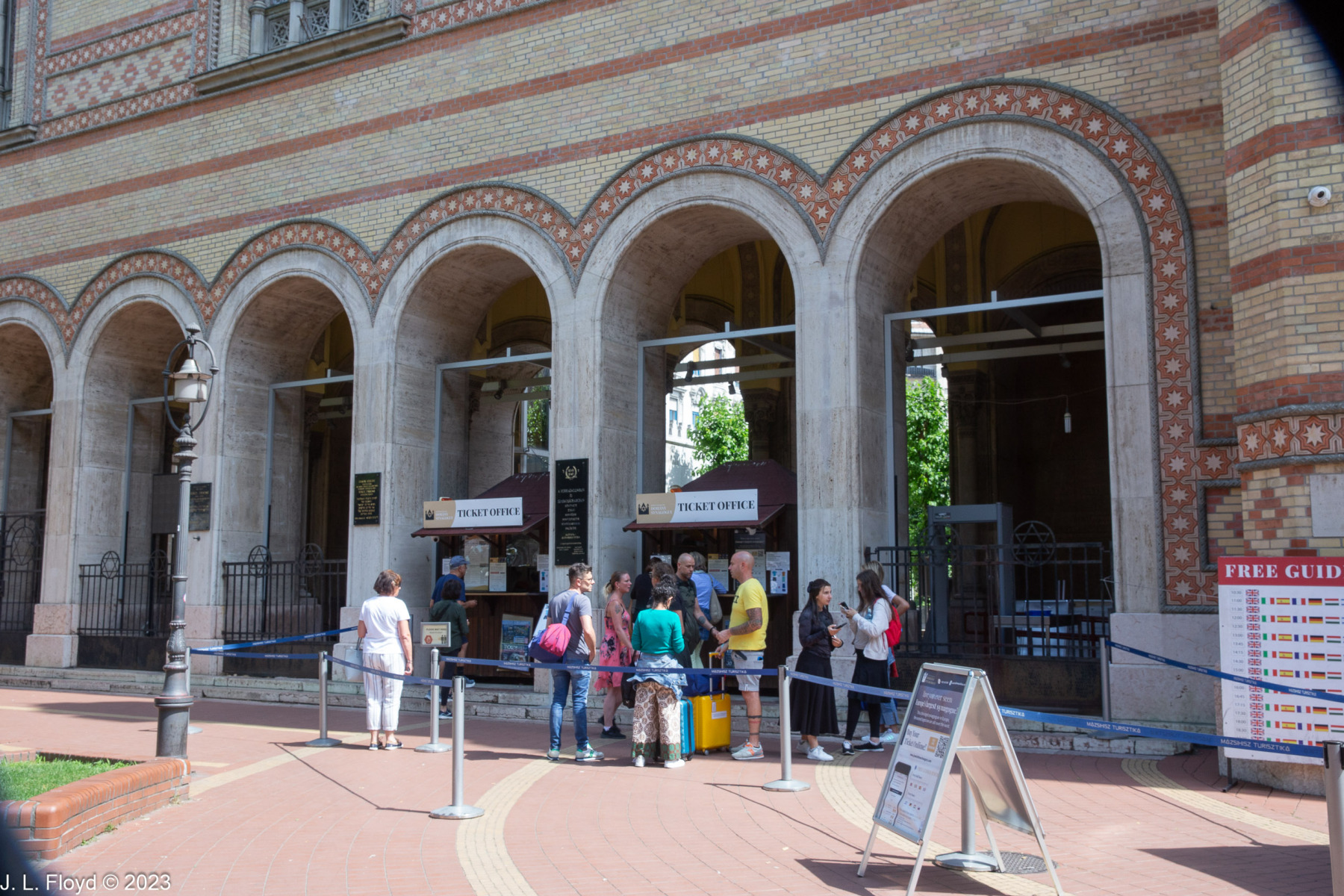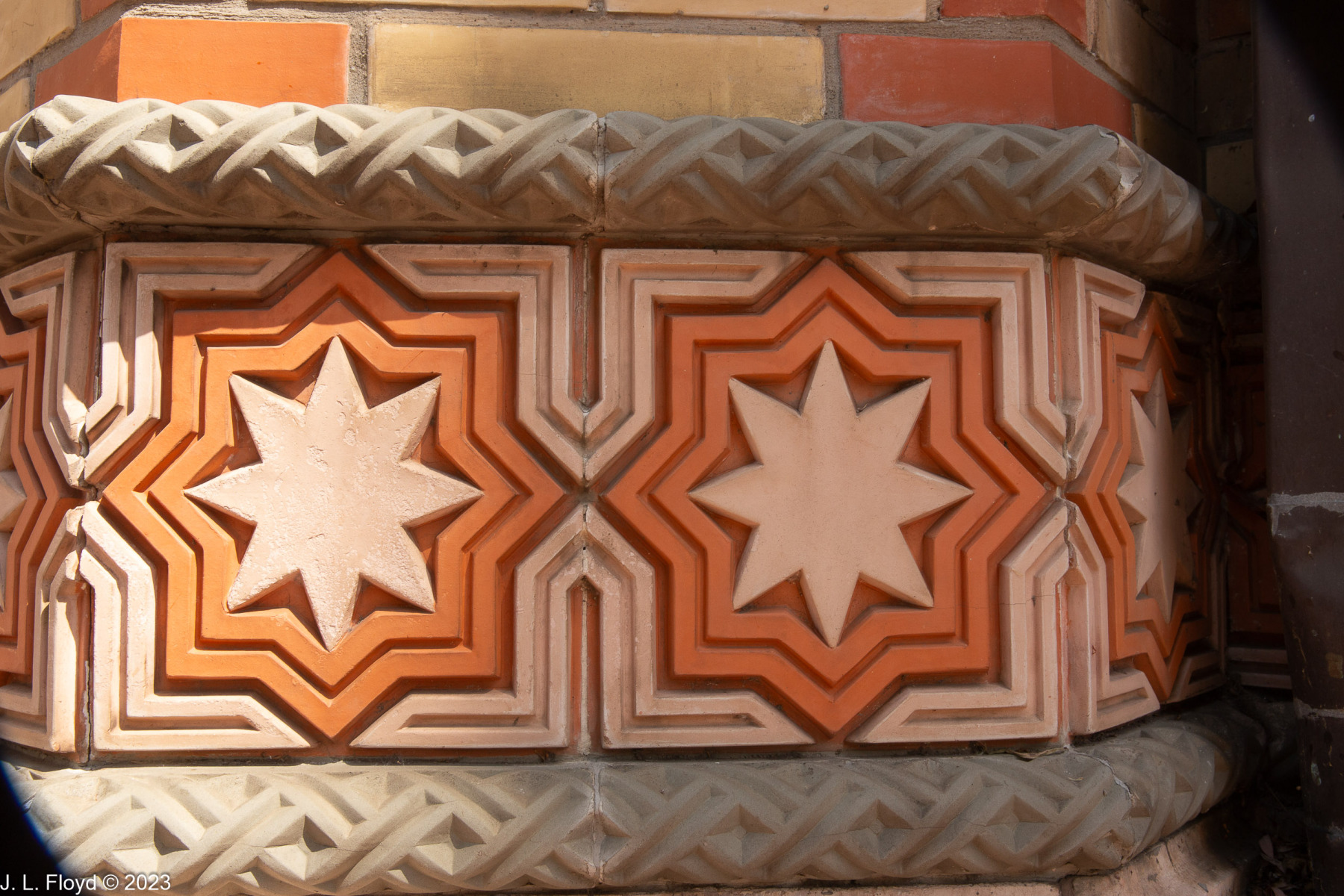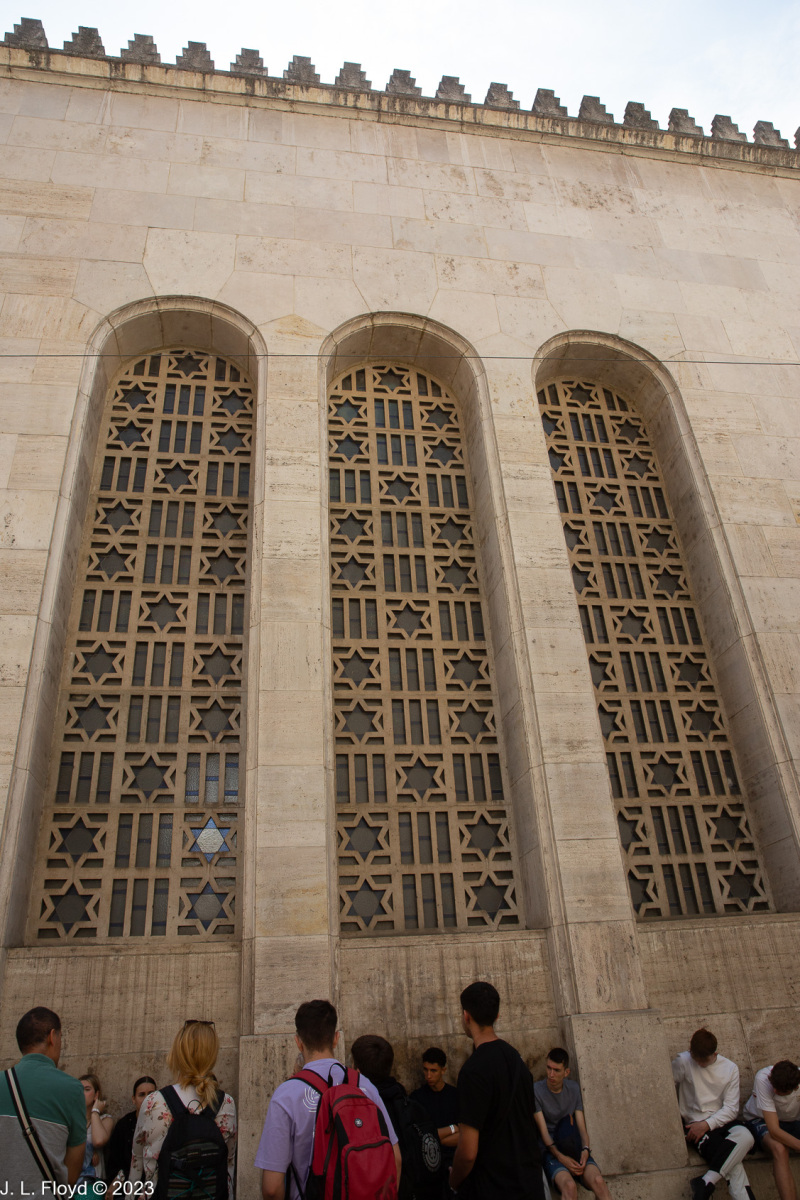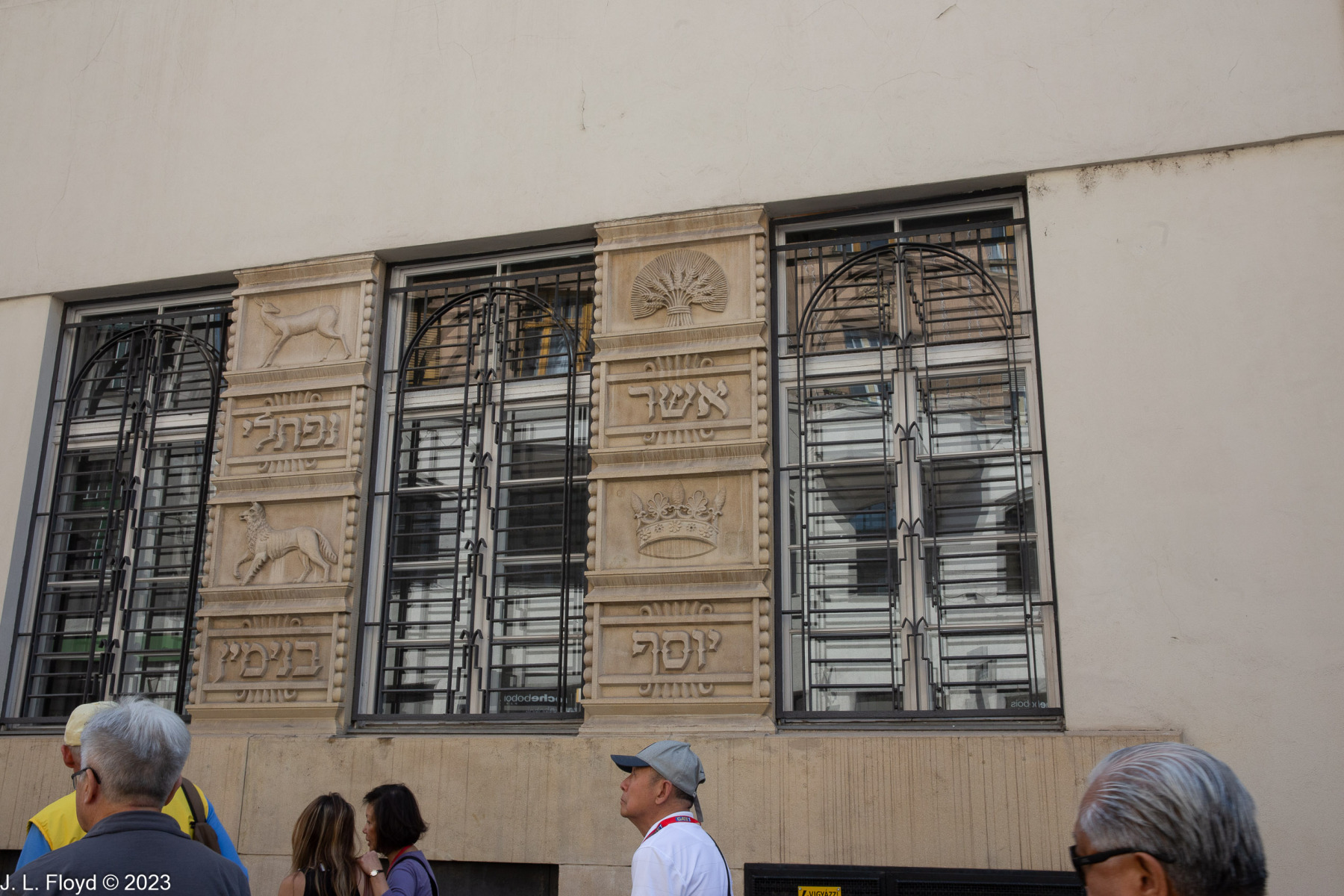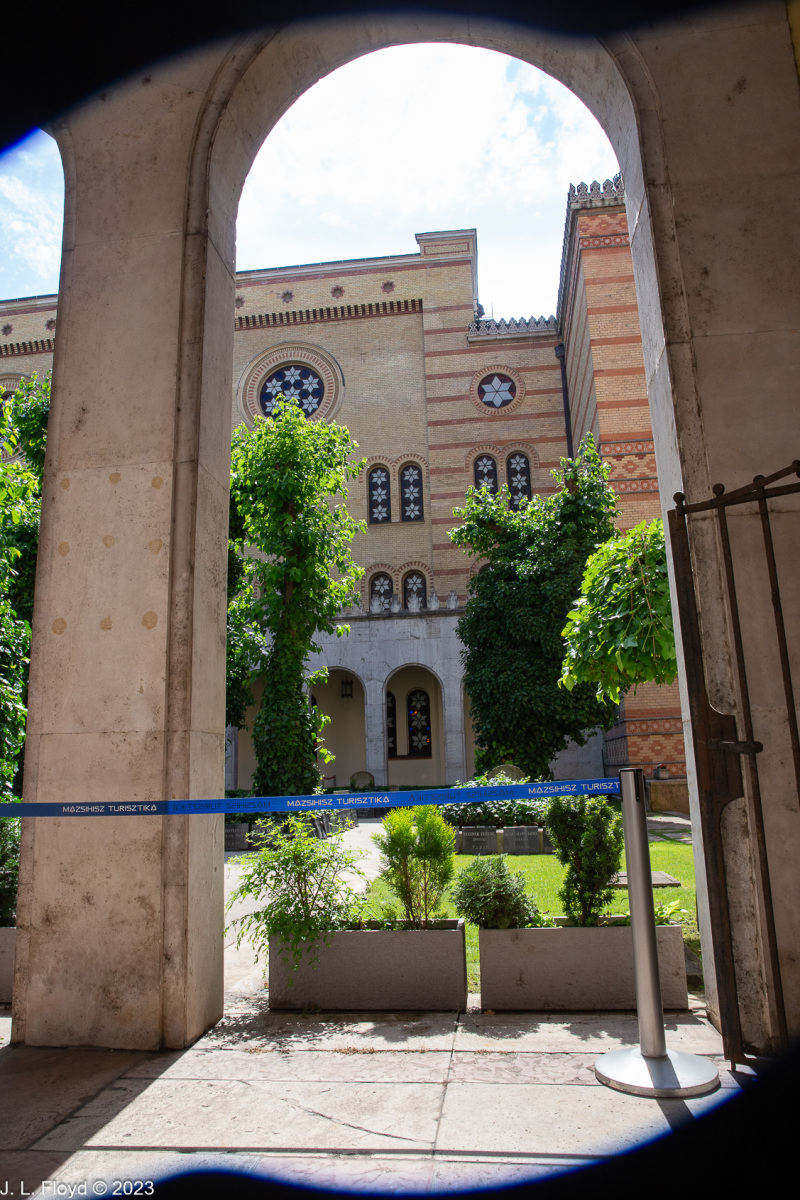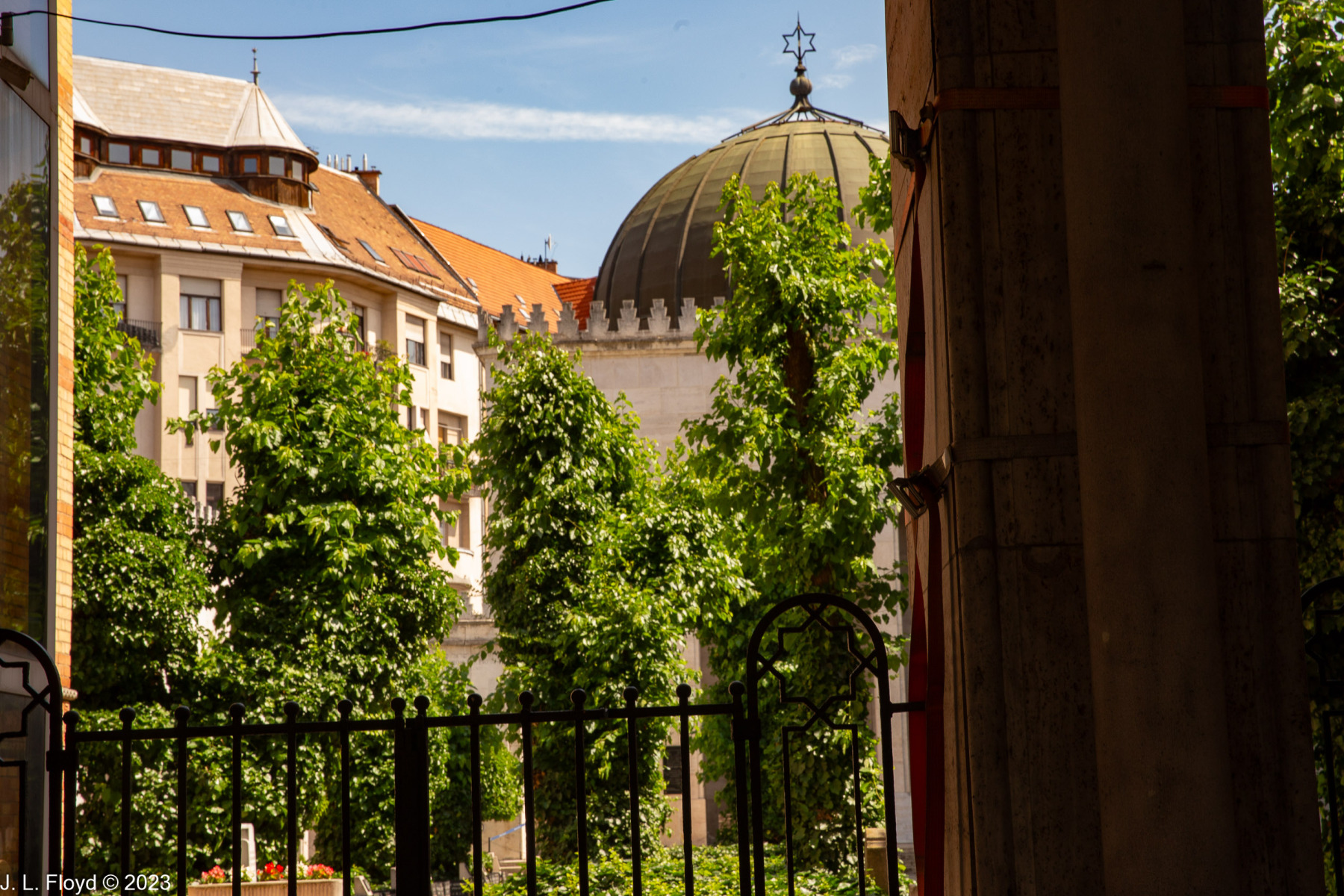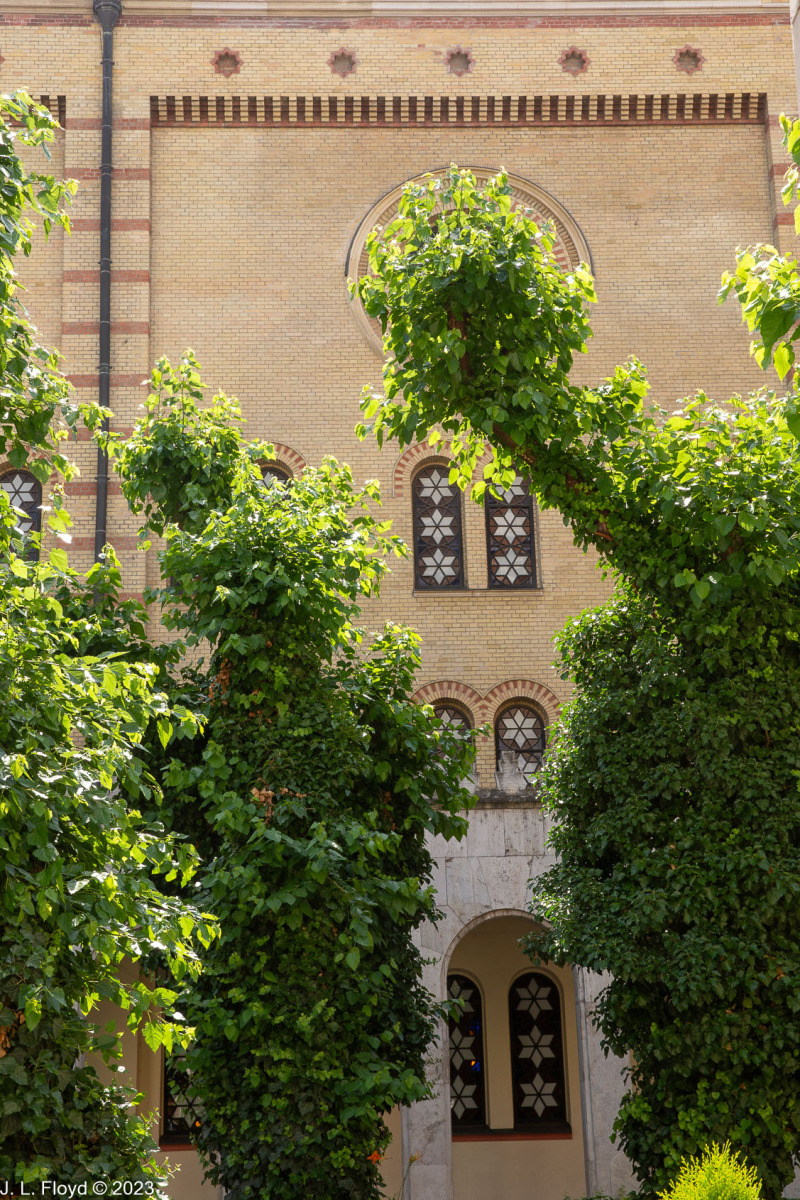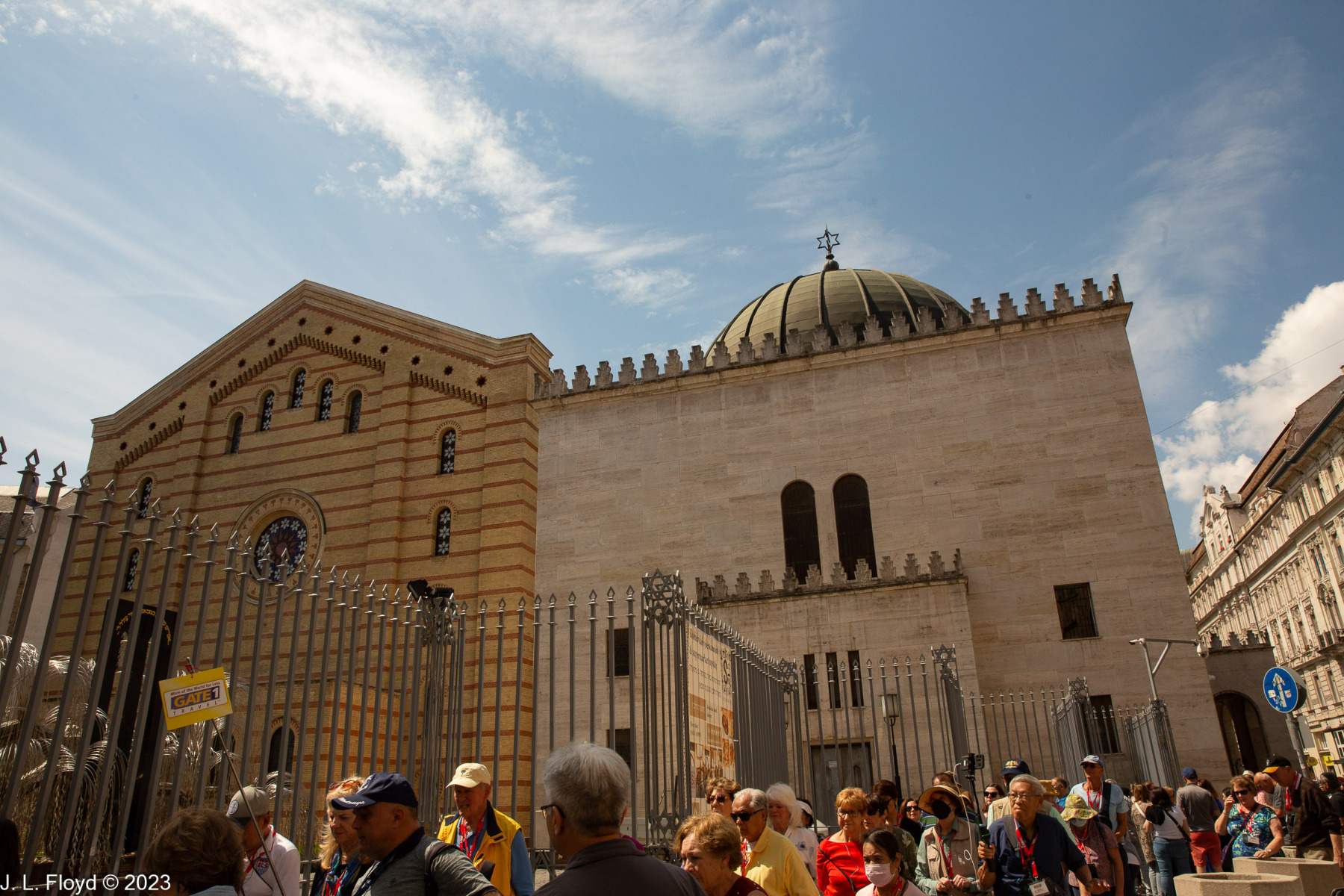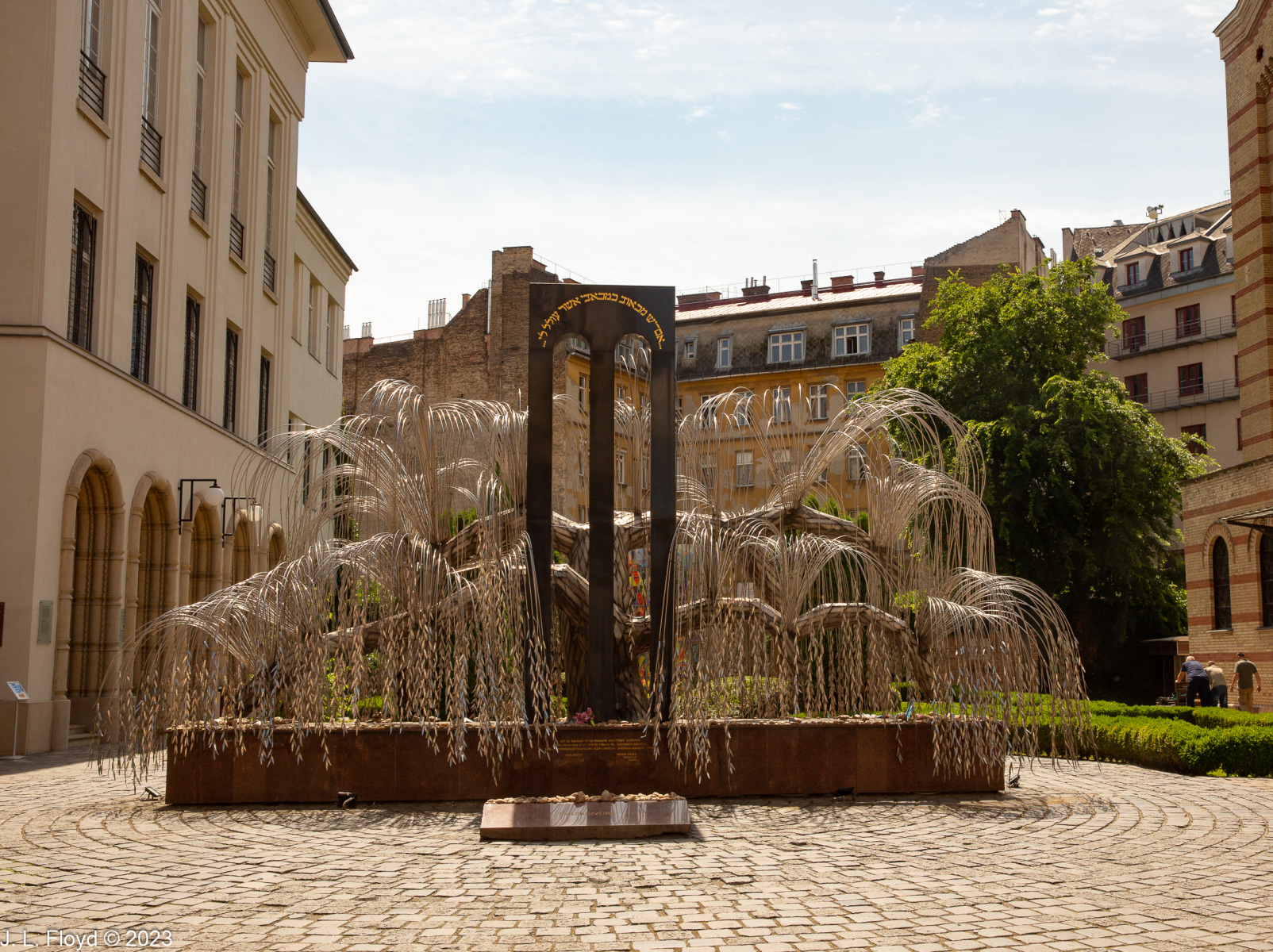Budapest’s historic Jewish quarter might well be called the Playground District these days because it appears to be the center of the city’s night life. But that would obscure the fact that the quarter has seen a great deal of history, much of it tragic, which should not be forgotten.
So it was appropriate that we began our tour of the Jewish Quarter at the Dohány Street Synagogue. (Dohány means “tobacco” in Hungarian.) This is the largest synagogue in Europe, seating almost 3,000 people, and the only synagogues in the world that are larger are in Israel and New York. It was built in the 1850s in a Moorish Revival style with an admixture of Byzantine, Romantic and Gothic elements. I’m a big fan of Moorish architecture and I regard the Dohány Street Synagogue as a masterpiece.
The synagogue played a key role in World War II. Hungary, under the right-wing government of Admiral Horthy, a former Austro-Hungarian admiral, was an ally of Germany in World War II and sent troops to participate in Hitler’s invasion of Russia. In 1944, after the tide turned decisively against the Axis powers, the Nazis perceived that Hungary was wavering in its commitment to the alliance; they sent in the troops and installed a puppet government. Up to that time, the anti-Semitic Horthy regime had conducted sporadic deportations of Jews and allowed occasional atrocities against them, but now Adolf Eichmann took charge and the Holocaust in Hungary began in earnest. In 1944 over 400,000 Jews were deported to Auschwitz. Those who were not deported were mostly relocated to the Jewish ghetto in Budapest. About 119,000 remained in the ghetto by the time the Russians liberated the city in January 1945. The Dohány Street Synagogue served as a refuge for many Jews who were unable to find quarters elsewhere in the crowded ghetto. Nevertheless, the winter of 1944-45 was a cruel one, and many ghetto residents died of cold and hunger. About 2,000 of them are buried in a makeshift cemetery behind the synagogue. The cemetery courtyard is a place of verdant beauty and tranquility, with walls, arches, windows surrounding a garden, all reminiscent of Moorish palaces in Spain.
The cemetery courtyard is walled on one side by the Heroes’ Temple, an adjunct to the synagogue built in 1931 to commemorate the Jewish soldiers who lost their lives fighting with the Austro-Hungarian army during World War I. On the other side of the Heroes’ Temple is the Raoul Wallenberg Holocaust Memorial Park. As most people know these days, Raoul Wallenberg was a Swedish diplomat who managed by various subterfuges to save thousands of Jews from Nazis and Hungarian fascists during the terrible days of 1944. In January 1945 he was arrested on suspicion of espionage by the infamous Soviet counterintelligence organization SMERSH (abbreviation for the Russian words smert’ shpionam, “death to spies”), depicted somewhat cartoonishly in Ian Fleming’s James Bond novel From Russia with Love. Twelve years later, in 1957, the Soviets reported that he had died of a heart attack in 1947, while imprisoned in the notorious Lubyanka prison in Moscow. There is no need to dwell on the suspiciousness of the Soviet account.
The Raoul Wallenberg Holocaust Memorial Park contains two memorials: one to Wallenberg and other persons, mostly diplomats, who saved thousands of Jews from the gas chambers by various subterfuges; and the second to the over 400,000 Hungarian Jews who died in the Holocaust. The latter, known as the Emanuel Tree, is in the form of a weeping willow tree, made of metal, each leaf of which is inscribed with the name and tattoo number of a victim.
